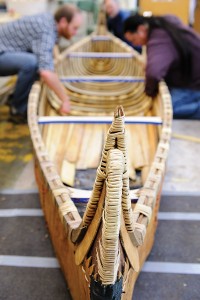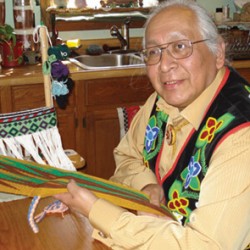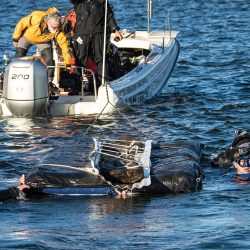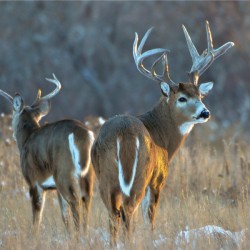Constructing Community

UW students and faculty helped construct this birchbark canoe using traditional methods, starting with peeling birchbark in the forests around Lac du Flambeau in northern Wisconsin. Photo: Jeff Miller.
Canoes carry culture. So does the process of making them.
Wayne Valliere, an artist and Ojibwe language and culture educator, led the effort to build this traditional birchbark canoe (wiigwaasi-jiimaan in Ojibwe) on campus. Valliere, known as Mino-Giizhig, is one of three Native canoe builders remaining in Wisconsin. He spent last fall as an artist-in- residence for the art department’s wood/furniture program.
From peeling birchbark in the forests around Lac du Flambeau in northern Wisconsin, to applying black pine pitch as waterproofing, Valliere constructed the canoe using traditional methods. Valliere teaches at Lac du Flambeau Public School. His students — along with middle schoolers from Madison’s Goodman Community Center and faculty and students from the UW’s art and folklore departments — pitched in to help with construction.
“For those of us who have worked on the canoe, we’ve known this canoe since the time it was still in the woods,” says Tim Frandy, a folklorist and outreach specialist for the UW’s Collaborative Center for Health Equity and Native American Center for Health Professions.
Last fall, a crowd of one hundred and fifty people watched as Valliere and Frandy launched the canoe into the chilly waters of Lake Mendota. It spent the winter on display at the Madison Children’s Museum, but now it has a permanent home inside DeJope Residence Hall, named for a word that the Ho-Chunk and other American Indians have used to refer to the Madison area for thousands of years.
Valliere, a member of the Lac du Flambeau Band of Lake Superior Chippewa Indians, sees the project as a way to pass on Ojibwe heritage to a new generation. “I’ve made my life about keeping our traditional ways,” he says.
Published in the Summer 2014 issue



Comments
No comments posted yet.